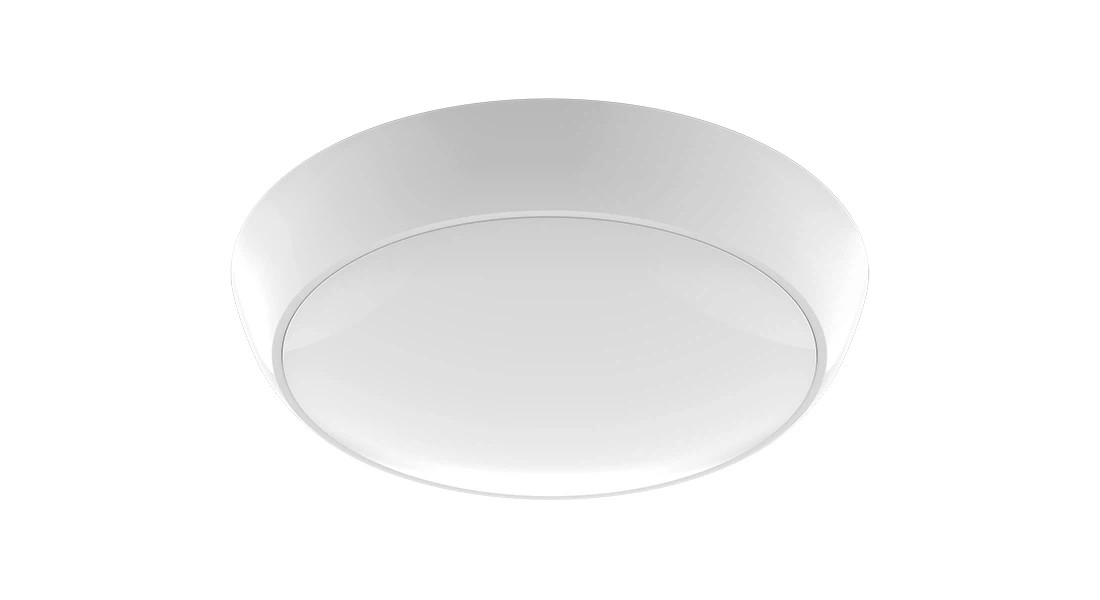Introduction
LED lights equipped with sensors are increasingly used across residential, commercial, and industrial spaces to enhance automation, safety, and energy savings. From motion detection to touch control, each sensor type offers distinct benefits. This article will explore the most common types of LED lights with sensors to help you choose the best light for your application.
Common Sensor Types in LED Lights
Following are some common sensor types used in LED lighting:
PIR Sensor (Passive Infrared)
It detects infrared radiation (heat) emitted by humans and animals. When someone moves within its range, the sensor senses the temperature change and triggers the light to turn on. If no motion is detected within a set time, the light turns off.
01
Dusk-to-dawn Sensor
It uses a photocell to detect ambient light levels and turns the light on at dusk and off at dawn without manual control.
02
Touch Sensor
When a conductive object (such as a finger) touches the sensor, the sensor detects a change in capacitance. So you can turn the light on or off with just a touch.
03
Microwave Sensor
It emits low-power electromagnetic waves and measures the reflection. When a person or object moves within the detection area, the reflected waves change, triggering the light. Unlike PIR sensors, microwave sensors can detect motion through thin walls or glass.
04
Sensor Type Comparison Table
|
Sensor Type |
Typical Application |
Advantages |
Limitations |
|
PIR Sensor |
Indoor/outdoor security, hallways |
Low cost, energy-saving, reliable |
Limited range, affected by temperature |
|
Dusk-to-Dawn |
Outdoor bulkhead lights, garden lighting |
Fully automatic, no manual switching |
Cannot detect motion, only light level |
|
Touch Sensor |
Desk lamps, bedside lighting |
Easy manual control, no mechanical parts |
Not automatic, requires physical contact |
|
Microwave Sensor |
Large indoor areas, warehouses |
Longer range, detects through thin walls |
Higher cost, can cause false triggers |
How to Choose the Right Sensor-Enabled LED Light
Choosing the right sensor LED takes into account your specific environment and needs:
1. Usage Environment
- For indoor areas such as corridors, toilets, or stairways, LED lights with PIR (passive infrared) sensors are more suitable because they only activate when human motion is detected, which can reduce energy waste.
- In more closed or complex spaces such as underground parking lots or warehouses, microwave sensor lights are better. They can pass through walls or thin barriers, provide higher sensitivity and a wider detection range.
- For outdoor applications such as garden lighting or building exteriors, dusk to dawn sensor lights are more suitable. Because they automatically turn on at night and turn off during the day.
- For personal spaces such as bedrooms, nightstands, or desks, touch sensor LED lights are more convenient. You can control the light with just a light touch on the lamp.
2. Sensor Range and Sensitivity
You need to match the sensor's detection distance and coverage angle to the actual space. For example, PIR sensors are usually able to detect motion within a range of 5-10 meters at an angle of 120° to 180°, which is suitable for smaller and concentrated areas.

3. Installation and Wiring
Some sensor lights are integrated and ready to use, while others require externally mounted sensors. For example, Toppo Lighting's MOD320 bulkhead light features a hinged integrated LED tray and comes with a plug-in emergency sensor and plug-in corridor sensor for easy installation and maintenance.
4. Certification and Reliability
Make sure the product is certified (e.g., CE, RoHS, FCC) and tested for electromagnetic compatibility. Certified products are more reliable and safe, while good electromagnetic interference shielding means the product is suitable for sensitive environments such as schools, offices, or laboratories.
Conclusion
LED lights with different sensors can provide different lighting uses, and understanding the differences between these sensors can help you make the right choice for your needs.
Toppo Lighting: A Trusted Manufacturer of Quality LED Lights
Toppo Lighting offers a variety of LED lights equipped with advanced sensors that provide high durability and performance. Contact us today to find the right LED lighting with sensors for your project.
